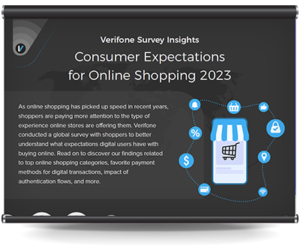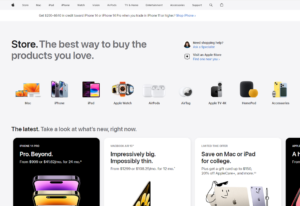For the vast majority of online shoppers, the first thing we do when considering a new purchase is to check the reviews. If there aren’t any reviews, it’s immediately suspicious. If there are reviews but they all look generic, copy-pasted, or largely negative, say goodbye to the sale!
For eCommerce businesses, positive online reviews have become the absolute gold standard in social proof. They are the first port of call for shoppers, often before they reach your site or even know your brand. eCommerce reviews are becoming more and more prevalent every year, with entire platforms devoted to their promotion.
As we’ll explain throughout this post, reviews have become a crucial cog in the sales machine for virtually every eCommerce on the planet. If you want to learn how to leverage reviews for more success and higher revenue, this is the place to start.
Are online reviews really that important?
The importance of reviews in eCommerce cannot be overstated. There is now a significant lack of trust in traditional advertising: we no longer believe anything just because a brand says it’s true, and many of us shop with powerful cynicism. Online customer reviews have become the new word of mouth: instead of trusting the seller, we turn to fellow shoppers and buy based on their experiences.
And to back up the sentiment, we know that in 2020 a staggering nine out of ten online buyers consulted reviews before making a purchase, and 76% of buyers implicitly trust reviews they read online.
So, let’s take a look at what makes highly-visible, positive online reviews so powerful for generating sales, as well as how and where to curate your own reviews, what pitfalls to avoid, and how to handle negative reviews.

How online reviews can skyrocket sales
The fundamental benefit of reviews is that it fills that trust void between the prospect and seller—but it’s even more concrete than that. There are several areas where online reviews can directly and significantly drive revenue for eCommerce businesses.
Through building trust with prospects
It’s important to remember that when someone clicks on your ad, they’ve got some level of product interest, but they don’t know you from Adam. Reviews can show potential buyers that you’re a legit company run by passionate people, who have personality and commitment to giving you a great experience.
Integrating a range of reviews on your site can easily be the difference between “Looks good but I’m not sure” and “Oh hell yeah I’m getting one of those.” We must also remember that today’s customers go online expecting to see reviews. If an eCommerce has an attractive looking product with no evidence that anyone else has bought and enjoyed it, they are leaving money on the table.
Great responses to negative reviews are also essential for trust. Seeing an imperfect company that works for the customer is actually more reassuring than a wall of 5-star reviews—unfair as that might seem!
Increased trust means prospects are more likely to buy.
Through better SEO and increased traffic
If your reviews are structured appropriately in HTML, Google can pull out and feature specific reviews from your website (say for a product search) and display this prominently in its search results. This is completely free and Google does it because it helps connect the searcher with the best possible answer to their query – which just might be your product!
Basic SEO also improves by having a spectrum of reviews online, on prominent platforms. It’s common for buyers to search “[product name] reviews” on Google—if you’ve amassed a bunch, they’re likely to be near the top of the search results again.
Better ranking in search results increases qualified traffic to your landing pages—for free!

Through creating more effective campaigns
Customer reviews are the #1 source of ultra-relevant, high-converting data for copywriters and marketers; they also make a strong basis for social proof Using the customer’s words and sentiment to communicate with prospects guarantees you’re making relevant points which resonate. In addition, customer reviews are so versatile that they can be leveraged on virtually every channel you’re using – you can include them in your social media posts to build customer trust and a strong reputation among colder prospects; you can also feature reviews in the email campaigns that you send to warm leads, or even in your content to reinforce how your solution delivers to its promise. Finally, social proof in the form of customer reviews can have a key role in conversions when strategically placed on your website pages (for example, on your pricing page).
Intelligent use of reviews in this way can transform the effectiveness of your advertising funnel, allowing you to effectively overcome objections and convert more “maybe’s” to “yes’”.
Campaigns built using reliable voice-of-customer data are significantly more likely to convert.
How to get reviews from customers
Probably the biggest mistake eCommerce brands make is assuming that customers will naturally leave a review. The reality is that only exceptional cases will leave reviews unprompted—that means mind-blowingly delighted customers, but also the red-in-the-face angry ones.
Another unfounded fear is that asking for reviews will alienate or anger customers. If it’s a great product and they’re happy with it, you should get an excellent response rate. So that’s step 1: if nothing else, just follow up and ask for a review.
If we go a level deeper, however, things get more nuanced.
The importance of authentic reviews
You want as many 5-star reviews as possible, right? Well… it turns out that as many as 60% of consumers are actually put off by a product with 100% 5-star reviews. They say it feels false or less authentic. Shoppers worry that they’re reading fake reviews for a disappointing product, if there’s not a single sub-perfect experience.
But the problem isn’t just the number of stars; it’s how they’re delivered. For example, take the following 5-star reviews:
- “Perfect item, great condition, does exactly what I need. Would recommend.”
- “Such a fantastic product, customer care is fantastic, everything is fantastic.”
When a company pumps out fake reviews, you can usually tell: they’re generic, perfect, impersonal, and don’t feel believable.
Authentic reviews are usually specific and call out unique experiences that not every customer would have. These extra details will do a disproportionate amount of heavy lifting when it comes to making prospects buy.
As well as well-rounded comments, you can add veracity to your online reviews with:
- Photos – Photos of the product simply makes the review more believable; so you may consider adding this option or working with review platforms that provide it out-of-the-box.
- Verified purchase – Some companies use a verification system to prevent spammers from posting fake reviews. While this is usually to protect themselves from negative reviews, the system also works to ensure only real buyers leave good reviews too.

Our tips for getting authentic customer reviews
#1 Ask directly
You can’t beat about the bush. At a certain time post-purchase, you can politely reach out to customers and ask, if they’re loving the product, to kindly leave you a review. This can be handled in myriad ways:
- A link to simple star-rating and comments box
- A survey looking for more details
- An interview, if you’re looking for fleshed out or video testimonials
#2 Make it easy
Whichever option you choose, make it as easy as possible for customers to respond. Don’t force them to create accounts, follow loads of links, or commit more than a few minutes of their time. The more hurdles you put in place, the more customers will give up, even if they love the product.
#3 Ask open-ended questions
The worst reviews come from yes/no questions. If you ask, “Did you love the product?” and they say “Yes”, what does that really give you? Instead, you should ask questions which require customers to quickly elaborate and provide detail:
- What do you love about this product?
- What surprised you about this product?
- Tell us any problems you had getting this product and how well they were resolved.
#4 Use incentives (sparingly)
If you’re struggling to generate valuable reviews, consider a mass communication offering the possibility of incentive. You should be cautious here and make sure you’re asking for honest reviews; many platforms are against soliciting or “buying” positive reviews specifically.
#5 Target satisfied clients, when possible
The most seducible moment for any customer is immediately after they demonstrate satisfaction. A powerful strategy for getting great reviews is surveying customers privately after a purchase:
- If you get a positive response—They’ve demonstrated they’re happy and willing to interact with the brand, so encourage leaving a public review.
- If you get a negative response—Ask what you can better, what problems they’ve had, or how you fell short of their expectations. Use this as fuel to improve your offering and, if you address the problems, request a review in future.
If you‘re not regularly conducting Net Promoter Score (NPS) surveys, you should start as soon as possible. In addition to helping you gauge where your business is standing in terms of customer satisfaction and retention (and if it needs to improve), the NPS also makes a valuable source for customer reviews. Therefore, another high-yielding strategy for getting reviews would be to reach out to your promoters because they are your most passionate customers, those who would recommend you and even become your advocates.

#6 Personalize the request
Personalized review requests get the best results. Including the customer’s name is nice, but you can do much better. If you have a phone number, consider calling the customer to personally run through their feedback and make the ask. You can do this in just 2-3 minutes and get considerably more and higher-quality responses than through an email link.
If you do email, make it as personal as possible: use human language, reference their specific purchase or survey comments, and try to strike up rapport.
#7 Send your requests at the right time
Timing is crucial and depends on the specific product purchased. You want to leave enough time for the product to be used and appreciated, while still being fresh in the customer’s memory.
If you used a survey, follow it up as soon as possible. For most products, 1-2 after delivery is a good rule of thumb; for products which take longer to use (like a moisturizer or running shoes) create a sensible timeline.
#8 Follow up
The reasons a customer might not respond to your request are uncountable. If you don’t get a response, follow up 1-3 times. You can use increasing urgency or introduce incentives but remember to be polite and personal at all times, and try to deliver some value before asking.
For example, give a useful tip for maximizing the benefit of your product…and then ask for a review.
#9 Say thank you
The customer is driving sales —be grateful! Reply publicly so shoppers see you as a proactive company, but then reach out privately to give a big, genuine thank you to the customer. This will solidify your great relationship and costs you nothing but a few minutes of time.
#10 Assess & Improve
Like any campaign, your review collection process can be improved. Start tracking some key metrics and review your success over time:
- Which approach has the highest success rate?
- What timings work best?
- What are the common objections to leaving reviews?
Over time, you’ll optimize this process and create a healthy, business-generating stream of happy customer reviews. Just remember that the vast majority of your happy customers will be silent and there’s nothing wrong with that. You’re hoping to stir up a minority into reviewing: it’s all about the quality of genuine reviews, not quantity of responses.

Getting reviews in the right places
As important as getting high quality reviews is getting them in the right place. Having strong testimonials and 5-star ratings on your website is fantastic—but only if you’re getting a lot of web traffic. If not, no one’s going to see them.
And even if you’ve got the traffic, expanding to 3rd party review sites is guaranteed to bolster it. The reality is that only 1 in 5 shoppers actually believes reviews on a brand’s website; for Google reviews however, this skyrockets to 76%. And since over half of all shoppers in the US turn to Google for reviews, this is clearly the place to be.
But it’s not the only one. Below we’ve listed the top ratings and reviews platforms for US businesses, all of which can provide a huge boost for eCommerce.
If you’re not selling physical goods, don’t worry, there are review websites built specifically for online goods such as software, SaaS, online services.
How to handle bad reviews without hurting your brand
First thing’s first: respond to the review.
Up to 97% of online review readers will expect to see company responses. It’s recommended to reply to positive reviews (because it increases engagement with your audience) but this is essential for negative reviews. You must be seen to be addressing any problems and calmly being the voice of reason for any false or exaggerated claims.
As with all facets of your brand, try to write your responses naturally. The iron-stiff, generic responses of some brands is just soulless. If you have negative reviews but the reviewer is actually right, then fix the things they’re complaining about. It’s more subtle, but this will also contribute to better customer satisfaction and higher sales down the line.
To sum up
Reviews are the word of mouth of 2021. In an age of direct attribution and correlating every penny earned with every penny spent, some businesses won’t like investing in “wooly” reviews that are hard to correlate reviews with sales. Fortunately, it costs your company extremely little in terms of man-hours or money, and all the research and anecdotal feedback says it’s a game changer.
It’s also true that modern eCommerce platforms make integrating reviews incredibly easy—from solicitation to formatting, moderation and putting them on the website. There’s very little work required on your end other than being polite and sensible, making reviews one of the simplest and most effective sales weapons in your arsenal.
How does your business collect reviews? Share your strategies in the comments, we’d love to hear them!
Source: https://blog.2checkout.com/online-customer-reviews-for-ecommerce/
- &
- 2020
- 2021
- 7
- Ad
- Advertising
- All
- Allowing
- anger
- Arsenal
- audience
- Authentic
- auto
- AVG
- BEST
- Biggest
- brands
- build
- Building
- Bunch
- business
- businesses
- buy
- call
- Campaign
- Campaigns
- care
- cases
- claims
- clients
- comments
- Common
- Communication
- Companies
- company
- content
- Costs
- Creating
- Customer satisfaction
- Customers
- data
- delivery
- detail
- driving
- ecommerce
- Effective
- Elaborate
- expanding
- experience
- Experiences
- fake
- Feature
- Finally
- First
- Fix
- follow
- form
- fresh
- Fuel
- future
- game
- Giving
- good
- goods
- great
- here
- High
- hoping
- How
- How To
- HTTPS
- huge
- Hurdles
- Including
- interest
- Interview
- investing
- IT
- Key
- language
- LEARN
- Level
- Leverage
- Line
- LINK
- love
- Majority
- Making
- marketers
- Metrics
- minority
- money
- Near
- net
- offering
- online
- Option
- Other
- People
- Personality
- physical
- planet
- Platforms
- Product
- Products
- promotion
- proof
- protect
- public
- pumps
- purchase
- quality
- range
- ratings
- readers
- Reading
- Reality
- reasons
- research
- response
- Results
- revenue
- review
- Reviews
- Run
- running
- SaaS
- sales
- Search
- sentiment
- seo
- Share
- Shoppers
- Short
- Simple
- Sites
- So
- Social
- start
- Stir
- success
- Survey
- system
- Target
- time
- tips
- top
- traffic
- Trust
- us
- value
- Verification
- Video
- Voice
- web
- Web Traffic
- Website
- websites
- WHO
- words
- Work
- works
- year








